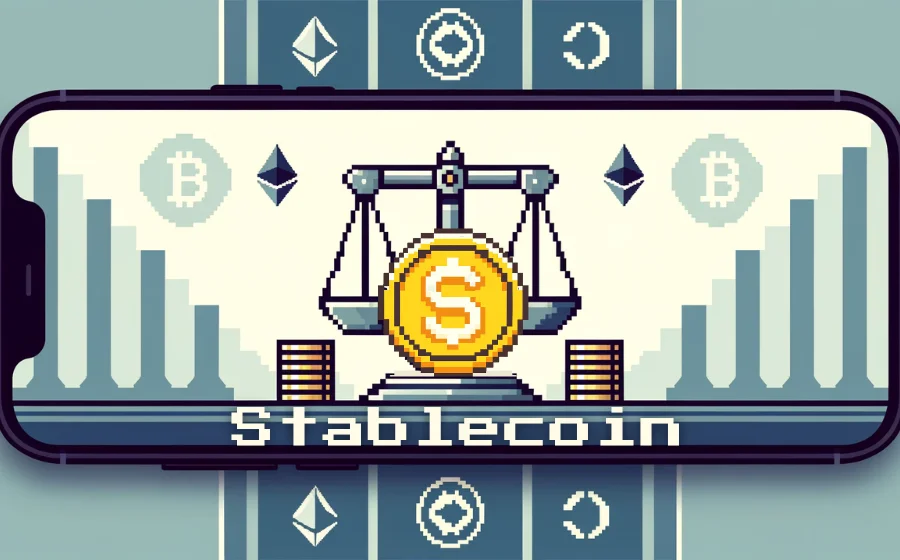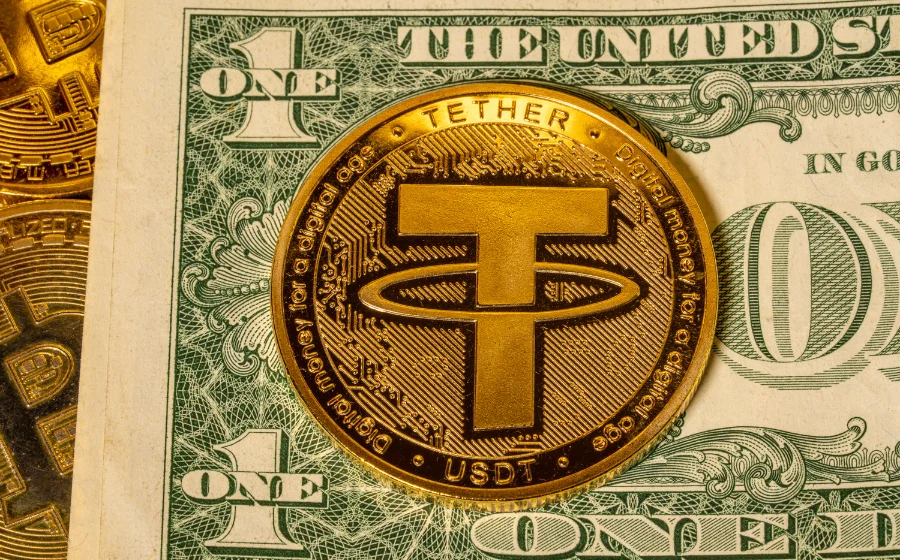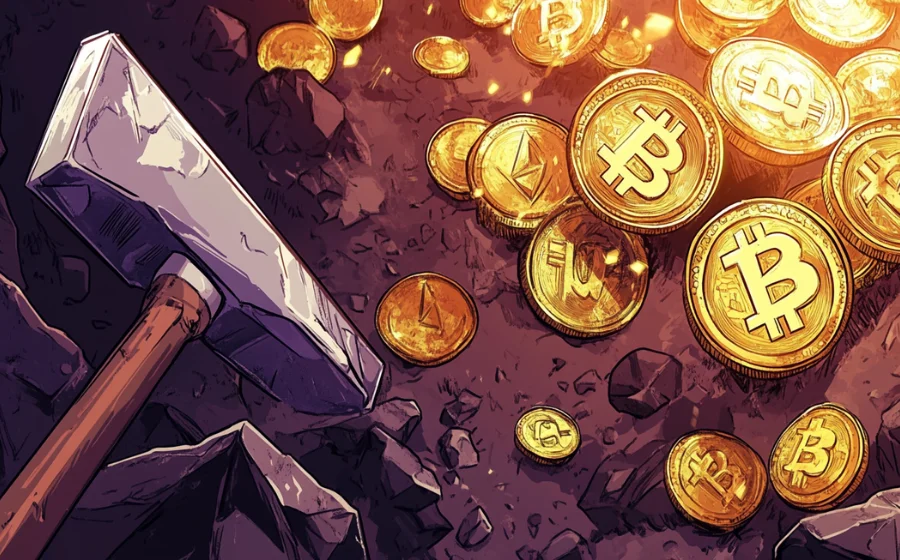
KEYTAKEAWAYS
- Decentralized Rendering: Render Network links creators with GPU resources, enabling efficient and cost-effective 3D rendering.
- ERC-20 Token Utility: RNDR tokens facilitate transactions between artists and GPU providers on the Ethereum blockchain.
- Future Potential: With AI advancements and increasing industry interest, RNDR's value and accessibility are poised for growth.

CONTENT
Stablecoins are cryptocurrencies pegged to stable assets like fiat currency or gold, offering price stability and reducing risk in volatile markets. Learn about their types, uses, and future potential.
WHAT IS A STABLECOIN?
Stablecoin is a type of virtual currency pegged to “stable” reserve assets like fiat currency or gold. It is a type of cryptocurrency with relatively stable prices. Unlike other cryptocurrencies such as Bitcoin and Ethereum, stablecoins maintain their value close to a specific amount, such as 1 USD or 1 EUR.
The conversion between fiat currency and cryptocurrency often incurs high fees and time costs. Therefore, cryptocurrency investors typically use stablecoins as a medium of exchange and a store of value. For example, when investors believe that Bitcoin’s price might drop, they can convert Bitcoin into stablecoins and hold them while waiting for the next opportunity to re-enter the market. The transaction time and costs between cryptocurrencies and stablecoins are much lower compared to those between fiat currencies and cryptocurrencies.
Initially, stablecoins were primarily based on the “pegged fiat currency” model, maintaining their value through fiat currency collateral. However, with the continuous development of the cryptocurrency market, more types of stablecoins have been developed. These include stablecoins collateralized by cryptocurrencies and those maintaining price stability through algorithms. The emergence of these new types of stablecoins has injected more vitality into the cryptocurrency market.
📌What are the Uses of Stablecoins?
Before the advent of stablecoins, there were many issues, such as stores being reluctant to accept cryptocurrencies and investors hesitating to hold them for extended periods due to their high volatility. For example, if you are a bakery owner, and you receive 1 BTC worth $10,000 today, its value might drop to $5,000 tomorrow. Of course, it could also increase, but as an owner, you generally cannot accept such roller-coaster changes.
To address the high volatility of cryptocurrencies, people continuously sought solutions. In 2014, Tether launched the first stablecoin, USDT. In 2015, MakerDAO introduced DAI. By 2020, with the booming decentralized finance (DeFi) sector, a large number of stablecoins emerged.
TYPES OF STABLECOINS
- Fiat-Collateralized Stablecoins (Fiat Stablecoins)
The most popular and secure stablecoins are fiat-collateralized stablecoins. These are directly pegged to fiat currencies and require issuance through “centralized institutions.” The issuing institutions must guarantee a 1:1 reserve of fiat currency.
The most well-known fiat stablecoins are USDT (Tether USD) and USDC (USD Coin). USDT, also known as Tether, is the stablecoins with the highest trading volume in the cryptocurrency market and is pegged to the US dollar at a 1:1 ratio. USDC, the second-largest stablecoin by market capitalization, is issued by the partnership between Coinbase and the Center Consortium, and is also pegged to the US dollar at a 1:1 ratio.
These issuing institutions regularly disclose account information, and accounting firms audit and publish this information monthly to assure users that there are sufficient US dollar reserves.
✅ Advantages:
- The structure of fiat-backed stablecoins is very simple.
- Fiat currencies are considered stable, ensuring low volatility.
✅ Disadvantages:
- The centralized structure is susceptible to hacking and bankruptcy.
- There is counterparty risk: you need to trust the token issuer and the centralized organization holding the reserves.
- Regulatory oversight and auditing are required.
>>> More to Read :
- Crypto-Collateralized Stablecoins (Crypto Stablecoins)
Crypto-collateralized stablecoins operate similarly to fiat stablecoins but are backed by other cryptocurrencies as collateral.
Users of crypto-collateralized stablecoins lock their cryptocurrency in a smart contract that issues tokens. To retrieve their collateral (cryptocurrency), users must return the stablecoins to the same contract (and pay interest).
Due to the high volatility of the collateralized cryptocurrency, over-collateralization is required. This means that the value of the collateral must exceed the value of the issued stablecoins to absorb price fluctuations of the cryptocurrency.
A well-known crypto-collateralized stablecoins is DAI, which uses Ethereum as collateral. Issuers must reserve 1.5 to 2 times the value of DAI in Ethereum, meaning the collateralization rate must be maintained between 150%-200%. If the price of Ethereum drops significantly and the collateralization rate falls below 150%, liquidation occurs to maintain the value of the stablecoin DAI.
✅ Advantages:
- It is decentralized, as it is based on blockchain technology.
- No custodians are needed.
- No regulatory oversight or auditing is required.
✅ Disadvantages:
- The structure of crypto-backed stablecoins is more complex.
- There is a heavy reliance on the collateralized cryptocurrency.
>>> More to Read : DAI: The Stablecoin Revolutionizing
RISKS AND ADVANTAGES OF STABLECOINS
📌Advantages of Stablecoins
1. Price Stability: Stablecoins have relatively stable prices. When cryptocurrencies like BTC and ETH experience high volatility, converting to stablecoins can effectively reduce risk.
2. Cross-Border Payments: Transfers of fiat currency are generally subject to foreign exchange restrictions, high fees, and slow processing times. Stablecoins, utilizing blockchain technology, can complete transfers efficiently, at low cost, and without restrictions.
3. Daily Consumption and Donations: Recently, cryptocurrencies have gradually been accepted by society, and some merchants have begun to accept cryptocurrency payments. Among them, BTC and USD stablecoins are the most commonly accepted.
📌Risks of Stablecoins
1. Regulation of Stablecoins: Given the rapid growth of the $130 billion stablecoin market and its potential impact on the financial system, regulators continue to scrutinize stablecoins. In October 2021, the International Organization of Securities Commissions (IOSCO) stated that stablecoins should be regulated as financial market infrastructure, alongside payment systems and clearinghouses. The proposed rules focus on systemically important stablecoins that could disrupt payment and settlement transactions.
2. Decoupling Risk: Any stablecoin can decouple from its pegged asset due to market volatility. Even the largest fiat-backed stablecoin, USDT, experienced a decoupling event in 2018, with its price dropping to a historic low of $0.6.
3. Risk of Bank Runs: A bank run is one of the most feared events in the financial world, with the potential to bankrupt any project or institution. Simply put, a stablecoin bank run occurs when holders panic and massively sell off their coins. Even if the institution behind the stablecoin has sufficient asset reserves, the coin’s price can still crash.
INTRODUCTION TO COMMON STABLECOINS
1. USDT
USDT is a fiat-backed stablecoin issued by Tether. Each USDT is claimed to be pegged to the value of 1 USD and backed by corresponding dollar reserves. It was one of the earliest fiat stablecoins issued. Although there have been reports questioning whether USDT’s dollar reserves are truly 1:1 as claimed, it remains the most popular and largest stablecoin by market capitalization, widely used for cryptocurrency trading and the conversion and trading of digital assets.
2. USDC
USDC is another fiat-backed stablecoin, issued in collaboration by Coinbase and Circle. Its value is also designed to be pegged to 1 USD and backed by corresponding dollar reserves. USDC’s issuance and management adhere to strict compliance and auditing standards, and it enjoys a high level of market recognition. It is currently the second most popular stablecoin, with usage second only to USDT.
3. DAI
DAI is a stablecoin issued by MakerDAO. Unlike traditional assets or fiat currencies as reserves, it maintains its value stability through smart contracts and market mechanisms. The supply and price of DAI automatically adjust based on market demand. It is one of the most common and widely used stablecoins on the Ethereum blockchain.
4. BUSD
BUSD is a fiat-backed stablecoin issued in collaboration between Binance and Paxos. Its value is designed to be pegged to 1 USD and is backed by dollar reserves held by financial institutions regulated by the New York State Department of Financial Services. BUSD was the official stablecoin used on the Binance platform. However, its market share has been gradually declining after being sanctioned by the U.S. SEC, and it is predicted to continue decreasing.
5. USD1
USD1 is a USD-pegged stablecoin backed by the Trump family and issued by World Liberty Financial (WLFI), a DeFi-driven financial platform. WLFI focuses on building blockchain-based infrastructure for global payments and lending solutions.
With strong ties to political leadership, institutional finance, and the evolving DeFi landscape, USD1 is more than just another dollar-backed token—it represents a strategic intersection of regulation, innovation, and market demand.
>>> More to Read : What is USD1? A Complete Guide
THE FUTURE OF STABLECOINS
Stablecoins are vital in the cryptocurrency market, providing trading pairs and acting as a hedge against volatility. They are more than financial contracts; they represent the evolution of traditional payment systems and cryptocurrencies. Controlled by algorithms, stablecoins offer the benefits of fiat currencies and can facilitate mainstream adoption of digital assets.
However, they still carry risks. Governments are exploring new regulations, aiming to treat stablecoin issuers like banks, requiring insurance for reserves. Despite these challenges, stablecoins have the potential to revolutionize global payments. As they become more stable and gain public trust, digital stable assets will continue to grow.
>>> More to Read : What is USDT0? Tether Introduces New Stablecoin
FAQ
- What is stablecoin?
A stablecoin is a type of cryptocurrency whose value is pegged or tied to the value of another fiat currency, commodity, or financial instrument.
- What is the purpose of a stablecoin?
The purpose of a stablecoin is to provide an alternative to the high volatility of popular cryptocurrencies, including Bitcoin (BTC).
▶ Buy Crypto at Bitget
ꚰ CoinRank x Bitget – Sign up & Trade to get $20!


















